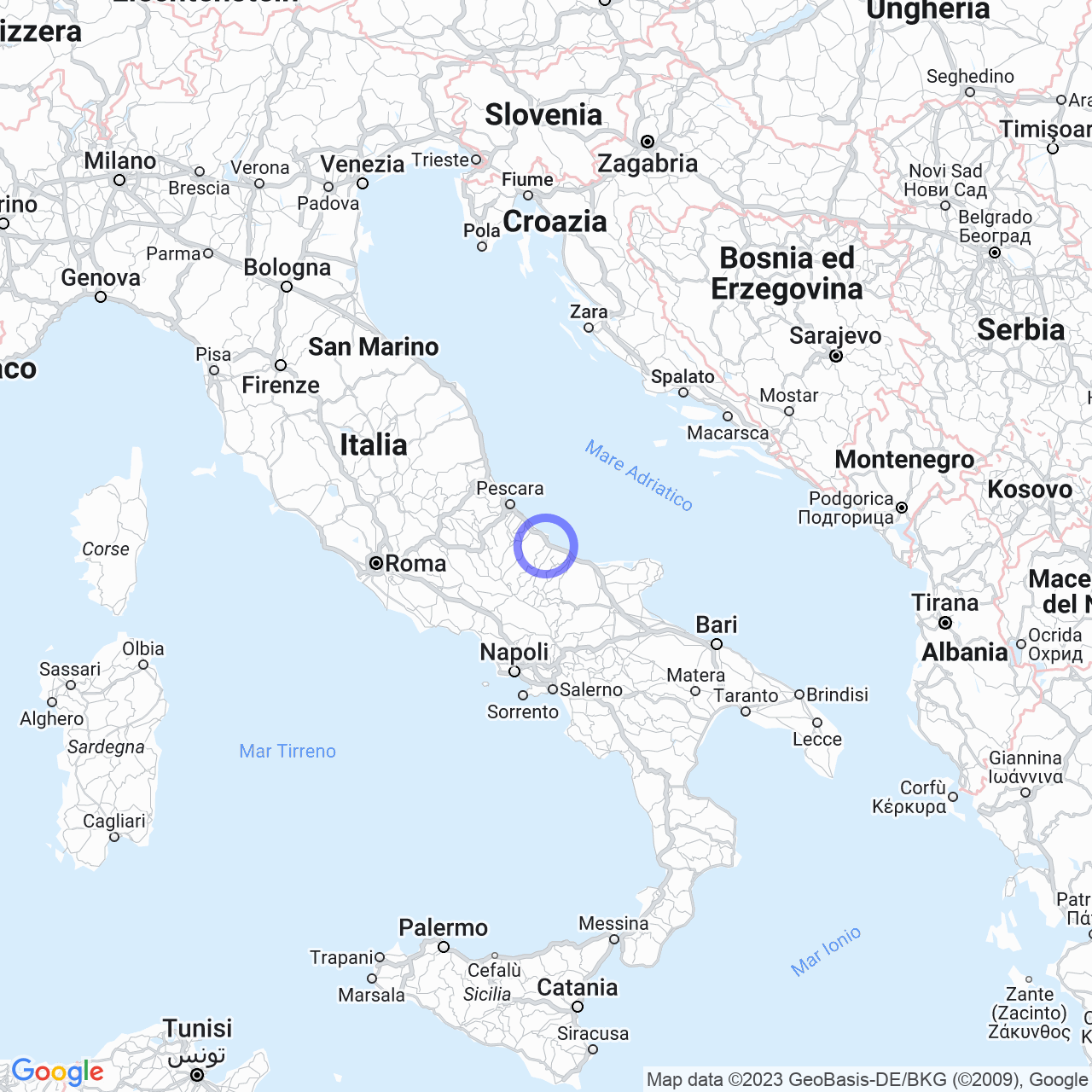Cupello
Cupello: a small town of ancient charm
Cupello is a municipality of about 3,500 inhabitants located in the province of Chieti, Abruzzo. Its name has uncertain origins, but there are several hypotheses about its etymology. Cupello was repopulated in the sixteenth century thanks to a settlement of Schiavoni from the d'Avalos of Vasto after the earthquake of 1456. Its history was characterized by different foreign dominations, including Spanish, Austrian, and Bourbon. Over the years, the town became a place of great tourist interest thanks to its monuments and the beauty of its ancient village.
Origins of the name
The town was originally named "Villa degli Schiavoni", but then it was changed to "Villa Cupello" and then simply "Cupello". The etymology of the name is uncertain: there are hypotheses that connect it to tile production, Greek, or Latin. According to oral tradition, the name derives from the Latin "in lucum pellere", which means to push into the woods, due to Turkish invasions in the surrounding territory. It is interesting to note that in the Gallery of Geographic Maps of the Vatican Museums, the town is named "Copola".

History
The history of Cupello is closely linked to that of Monteodorisio. In the sixteenth century, the town was repopulated by Schiavoni after the earthquake of 1456. Subsequently, it was dominated by the Spanish, Austrians, and Bourbons, until the French arrived in the territory. Today, Cupello is a small town of ancient charm, which offers visitors the opportunity to discover its beauties and its history.
Monuments and places of interest
The town of Cupello is rich in monuments and places of interest that are worth visiting.
Ancient village
The ancient village of Cupello dates back to the sixteenth century and does not appear to be enclosed by walls. Among its main fortified palaces, the Palazzo Marchione and the Palazzo Erminio Boschetti with a turret stand out. The Palazzo Marchione, which now houses the town hall, has pairs of niches on the facades where sculptures could be inserted. On the facades of the palace, defensive elements such as fuciliera and loopholes can be noticed. The Palazzo Erminio Boschetti is also from the eighteenth century and is characterized by a seventeenth-century facade with framed partitions. The turret, which is the oldest part of the palace, was used as a defensive element.
Cupello represents one of the hidden treasures of Abruzzo. Thanks to the beauty of its ancient village and its history, the town offers the opportunity to immerse oneself in a magical atmosphere and discover an area of the region that is all to be explored.
